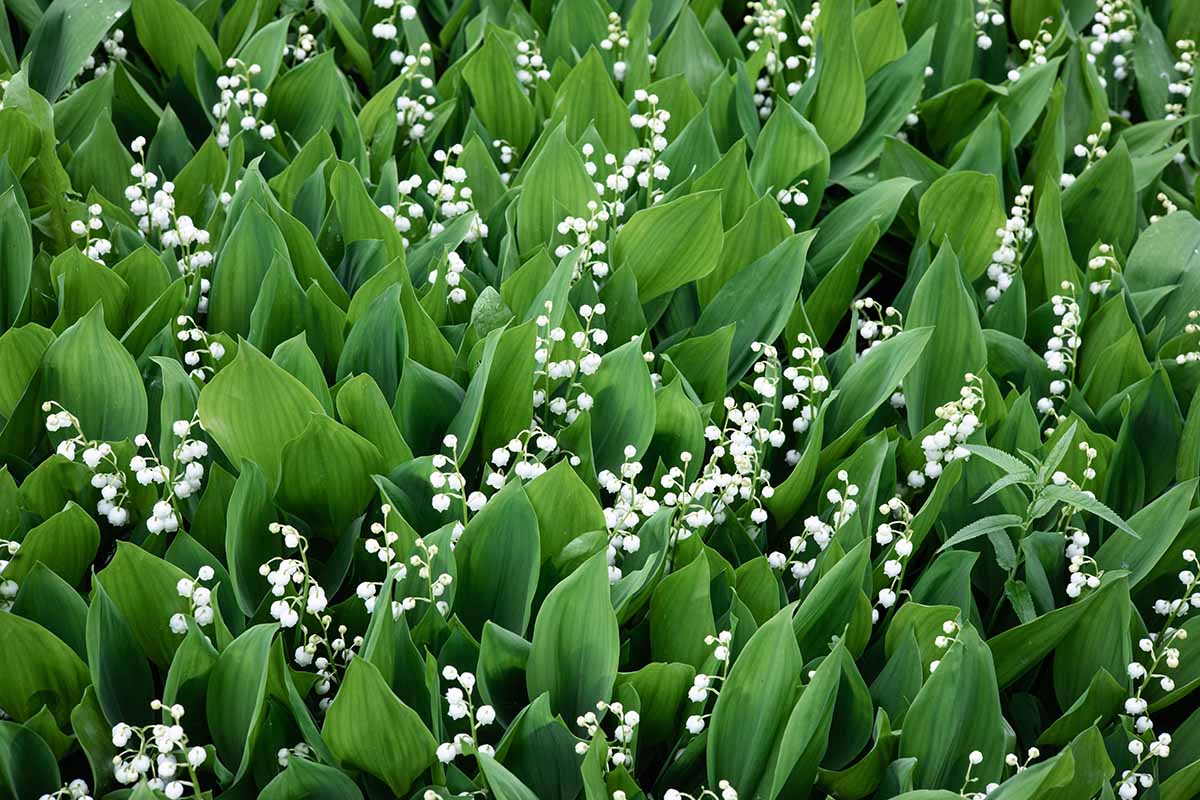Lily-of-the-Valley
Couldn't load pickup availability
Description
Lily-of-the-Valley: A Sweet and Fragrant Woodland Gem
The Lily-of-the-Valley (Convallaria majalis) is a classic woodland perennial known for its delicate, bell-shaped flowers and enchanting fragrance. With its ability to thrive in shady conditions, it is perfect for brightening up the dark corners of your garden or naturalizing in woodland areas. Known for its sweetness both in appearance and scent, this perennial is a timeless favorite for gardeners seeking elegance and fragrance in their landscapes.
Key Features
- Delicate, Bell-Shaped Blooms: Lily-of-the-Valley produces clusters of small, nodding, white or pale pink bell-shaped flowers that hang from arching stems. These blooms emit a powerful, sweet fragrance that makes them a delightful addition to any garden.
- Shiny, Dark Green Foliage: The plant features lance-shaped, glossy green leaves that provide a vibrant backdrop for the beautiful flowers. The foliage adds texture and color throughout the growing season, even when the flowers are not in bloom.
- Fragrant Blooms: The distinctive fragrance of Lily-of-the-Valley is one of its most charming attributes. The sweet, heady scent fills the air in spring, attracting pollinators like bees and butterflies.
- Shade Tolerant: Ideal for woodland gardens or shaded areas, this plant thrives in low-light conditions. Its ability to thrive in areas where many other plants struggle makes it an excellent choice for difficult spaces.
- Naturalizing: Lily-of-the-Valley spreads by rhizomes, forming dense mats that can naturalize over time. It’s perfect for creating a fragrant ground cover or filling in shady spots in your garden.
- Edible but Toxic: While the flowers may seem innocent, all parts of the plant are toxic if ingested, so it’s best to keep it out of reach of pets and young children.
Care Instructions
Light
Lily-of-the-Valley thrives in partial to full shade. While it can tolerate some direct sunlight, it prefers the dappled light of woodland gardens or shaded borders.
Watering
This plant enjoys consistently moist, well-drained soil. Water it regularly, especially during dry spells, but avoid allowing the soil to become soggy, as this can lead to root rot.
Soil
Lily-of-the-Valley prefers rich, loamy, well-drained soil that is kept moist. Adding organic matter like compost helps improve soil structure and provides nutrients for healthy growth.
Temperature
Hardy in USDA zones 3–9, Lily-of-the-Valley can tolerate a range of temperatures, from cool climates to mild heat, making it a versatile addition to many gardens.
Plant Dimensions
- Height: Grows to a height of 8–12 inches, making it an ideal groundcover for filling in low-growing spots or adding a layer of fragrance at the base of taller plants.
- Spread: Can spread up to 12–18 inches through rhizome growth, forming dense, fragrant clusters that fill shady areas beautifully.
Why Choose Lily-of-the-Valley?
The Lily-of-the-Valley is a timeless and enchanting plant that offers both beauty and fragrance to shaded spaces. Its ability to naturalize and form dense, fragrant mats makes it a perfect choice for creating ground cover in woodland gardens or shaded borders. The delicate blooms and powerful scent add a touch of elegance and charm to any garden, while its low-maintenance nature makes it easy to care for. Whether used for a woodland garden, as a fragrant ground cover, or in a bouquet, the Lily-of-the-Valley is sure to captivate gardeners and visitors alike with its graceful beauty.







